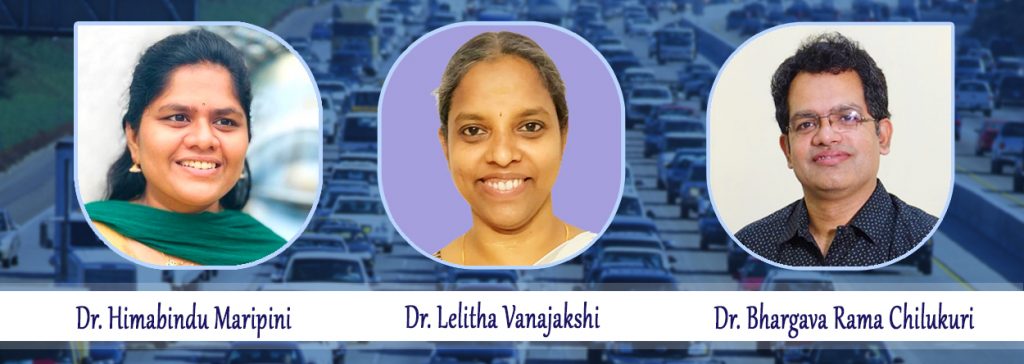
If only there were a magic solution to the frustrating delays at traffic signals in India…guess what? The solution may have already arrived! This is thanks to the research carried out by Dr. Himabindu Maripini, Dr. Lelitha Vanajakshi, and Dr. Bhargava Rama Chilukuri from the Department of Civil Engineering, Indian Institute of Technology Madras, Chennai, India.
In this study, the researchers have arrived at a possible solution to the traffic snarls at urban intersections in India, by using a probe-based approach for real-time, re-timing of traffic signals. Travel-time data from four sample-probe vehicles were used to calculate ‘Green’ and ‘Red’ timings for each signal cycle (a signal cycle is the time between one ‘green’ signal to the next ‘green’ signal, or one ‘red’ signal to the next ‘red’ signal for a selected movement). This is probably the first time a probe-based, demand-responsive signal control has been developed for Indian conditions.
While a lot of time, effort and money has been spent on experimenting with ‘off-the-shelf’ traffic-responsive signaling software from abroad, these have not worked well in Indian traffic conditions, since their implementation required a number of sensors and large traffic stream data, which was not easy to collect. Moreover, these software were rarely flexible for incorporating Indian traffic characteristics in their algorithms, resulting in excessive queues and delays at the intersection, in spite of large capital investments.
The traffic composition in India is very different from that in the western countries. In India, the traffic is usually referred to as belonging to the category of ‘mixed traffic conditions’, with a variety of vehicle-classes juxtaposed with lane-free movement. Therefore, in this study, the effect of composition has been included in the algorithms, that makes it versatile for use across different cities with varying vehicle compositions. Moreover, in this study, the travel-time data (which is invariant to the vehicle class) is used, instead of the traditional input, which is traffic-flow; this makes the algorithms easy to implement with a variety of probe-based data sources such as Bluetooth, Wi-Fi, and Radio Frequency Identification scanners. Another advantage is that these data sources are low-cost, efficient, and can collect travel information of large samples of vehicles for traffic-control applications. The authors in this study formulated a mathematical optimization problem that uses the sample travel-time data to compute optimal ‘green’ and ‘red’ durations, such that the varying traffic demand is met, while ensuring minimal queues and delays.
This algorithm can also be extended to oversaturated intersections and optimum signal coordination across a series of intersections, which present themselves as areas of future research.
Dr. Aleksandar Stevanovic from the Department of Civil & Environmental Engineering, Swanson School of Engineering, University of Pittsburgh, Pittsburgh, USA, has acknowledged the importance of this research thus – “Maripini et al. article tackles an important subject of managing traffic, at signalized intersections, at near-saturated traffic conditions. Our society is seeing an unprecedented level of traffic congestion which can be only partially solved by better optimization methods. However, even when we have such opportunities, we usually utilize the models which are usually too simplistic in terms of what they can represent (homogenic vehicular traffic) and often too complex for the field implementation. This research fills the gaps on both ends – it considers heterogeneous traffic (which is becoming more prevalent even in developed countries) and most importantly, offers a very practical implementation with field traffic signals. Finally, instead of using an approach based on just the extent of traffic-volume at each intersection, this research utilizes probe-based travel time, which is a more representative characteristic of driving experience, especially in the conditions of mixed traffic. Overall, it is a very timely research that promises to significantly contribute to better allocation of intersection-capacity in saturated mixed-traffic conditions.”
Article by Akshay Anantharaman
Click here for the original link to the paper










